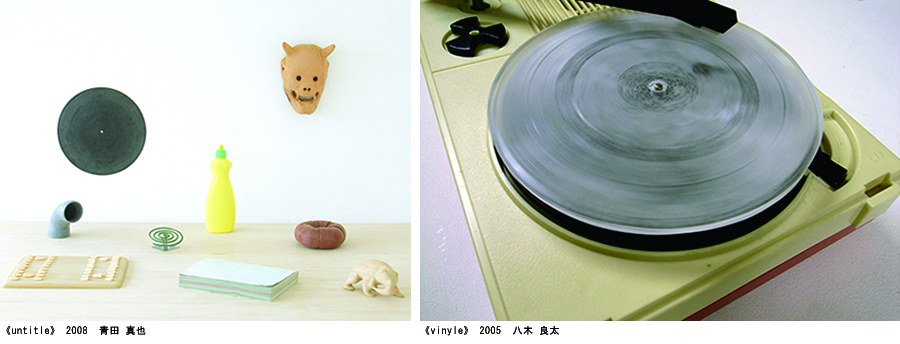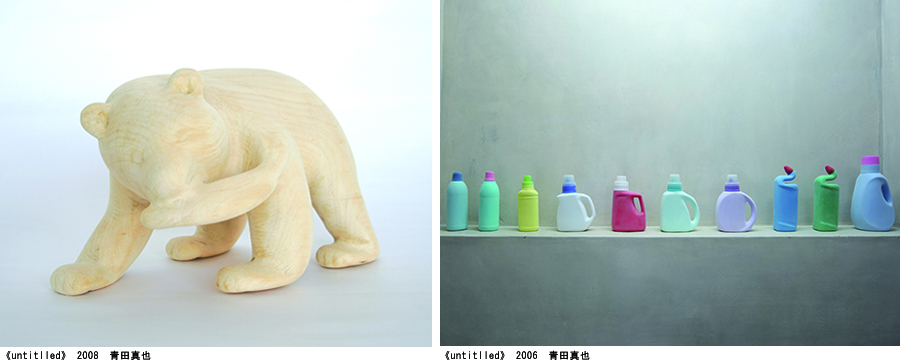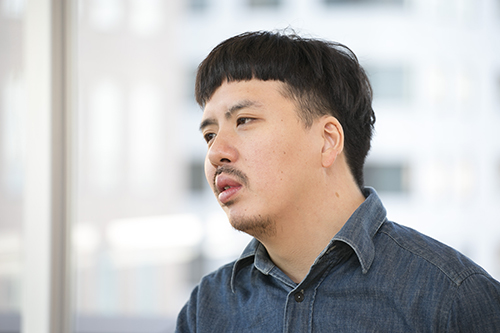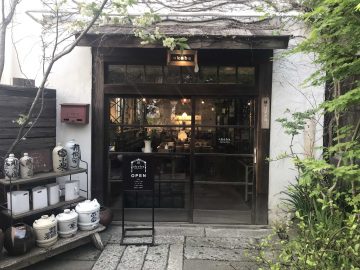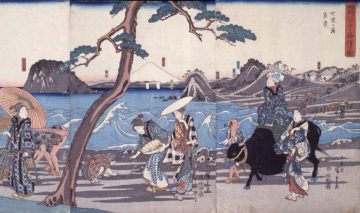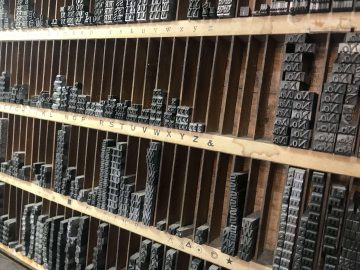[Daily Life/Off Record Exhibition Linked Project] Shinya Aota x Ryota Yagi Cross Interview
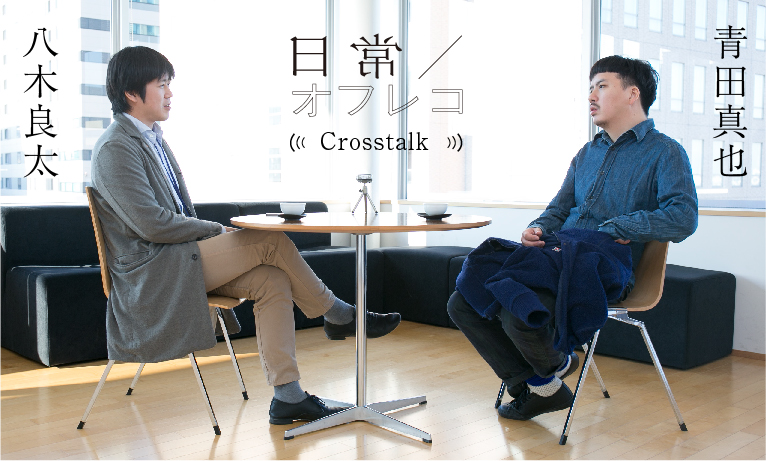
Text by : akiko inoue Photography by : Masanobu Nishino
A cross-interview with artists participating in the "Nichijou/Off the Record" exhibition held at the KAAT Kanagawa Arts Theater Middle Studio from January 11, 2014 (Saturday) to January 30, 2014 (Thursday). This time, we would like to talk to two artists, Shinya Aota, who is an artist who carves away the surfaces of all things and transforms them into works of art, and Ryota Yagi, who is highly acclaimed for his installations that skillfully utilize sound and video. We asked each other questions about things we were concerned about.
■Question from Ryota Yagi to Shinya Aota
Ryota Yagi (hereinafter referred to as Y): The question I would like to ask Mr. Aota is whether you feel that you are creating the work as a form of print expression.
Shinya Aota (A): I don't really think about it that much. However, I am often told that my work looks like a print. I think it's important to use things that have been produced in large quantities, or things that have a well-established image.
Y: That's one of the characteristics of prints.
A: Yes. When I was little, I loved and collected things with characters, and even now I still like them.
Y: So do you have a lot of figurines at home?
A: No, not really, but I do sometimes quote and use images of those kinds of things.
Y: In your works, the words "image" and "surface" are very impressive, but what do you think about "content"? The part other than the surface of a carved object.
A: I'm interested in that too. I can't really put it into words yet, but I like the loose feel. When it comes to things like that, I do it pretty much by feeling. There used to be a special feature on Ghibli in my art notebook, and it said that ``Ghibli has a mellow feel'', which is a little different from that aspect of my work. Maybe, but I'm drawn to something similar to the giant god soldier from Nausicaa, or something similar.
Y: I think I can understand what you're saying. Delori feeling. Mr. Aota has two layers running parallel to each other; the surface is relatively conceptual, and the inside is a very loose and sensuous form.
A: Well, it's both... However, when creating a work, I continue to create it intuitively, and how I display it and what kind of objects I bring may change depending on the location.
Y: When I create a piece of work, I look forward to surprises and discoveries. Mr. Aota, are there any interesting things you discover while carving?
A: It's quite a boring job, so the pain is painful (lol)
Y: I see, the change itself doesn't appear suddenly, but gradually.
A: That's right. But the work is like running a marathon, and even though it's exhausting, there are moments when it starts to feel good (lol). For example, it's similar to the strange feeling you get when you work part-time on assembly lines and you can do the work without thinking.
Y: Hmm, I don't know what to say, it's not a runner's high...
A: lol
Y: But I think Mr. Aota is probably using his body. Right now, you're still sharpening the grand piano that you plan to exhibit at the off-the-record exhibition. It's like some kind of drug in your brain...I totally understand. That's what happens to me when I cut cardboard. When you're doing art, you end up using a lot of cardboard, right? We don't have waste paper collected, so we cut it up in bulk on the day of the burnable garbage. By the way, at home we call this "chopping wood," and it's just cutting cardboard into small pieces with a utility knife, stacking them one on top of the other, and putting them in a garbage bag. When I'm working on something, I'm pretty absorbed in it and don't think about it.
A: Do you feel that way when you're creating?
Y: I don't have that kind of desire when I'm creating. The same goes for ``chopping wood,'' but I think it's beautiful to just do the act without thinking about it. Driving is similar in the sense that you drive without thinking.
A: Oh, definitely. I also ride my bike when I have something to think about.
Y: Yeah, yeah. In my case, physicality doesn't always connect with my work, and when I say ``I'm going to make a piece,'' I usually do some computer work such as shopping or drawing up drawings.
A: Do you get ideas for things like shopping?
Y: There are two types of purposes: shopping itself and searching for materials.I've mentioned before that I often go to hardware stores, and I've been going there often since I was little. . Ideas often come to me when I look at things in a crowded space like a home improvement store.
A: Where do you get the records that are often used in Yagi-san's works?
Y: A used record store in Kyoto. I just pull out the record, take out the contents, and check the color of the label. Then, when I get home, I classify them as materials, such as jackets being jackets and records being records. Afterwards, when I listen to the record, I think, "Oh, that's such a great song!" When I look for records, my eyes are completely focused on the material, so I end up looking at records based on what color the label is, rather than whether it's worth something or not...
A: Lol! At that time, do you look at a record at a record store with a purpose in mind, wondering what to do with it?
Y: Ah, that's just the shopping you did earlier. Don't go to the record store to think,
A: Go with a purpose.
Y: Yeah. However, ideas rarely come to me when I go shopping to think. That's when you're cutting cardboard, driving, talking to someone, or doing something completely unrelated, and you think, ``Oh, it would be interesting to combine this and that I saw at that hardware store the other day.'' ``Huh...'' was something I suddenly thought of. Shopping is a necessary task, but it doesn't produce anything at the time...
A: I see.
Y: Mr. Aota, how do you obtain the materials you use in your works?
A: I often receive them. I also received about three carved wooden bears (lol). But since I've already made it into a work, I don't want to do the same work again.
Y: Is it better to always use a different motif?
A: Yes. Because it's work, it's going to be tiring.
Y: Do you have any criteria for choosing materials, such as detergent bottles or bears?
A: Simply, the icons are solid. Also, as I mentioned earlier, there is of course the question of whether you should go with what you feel or not. As a side note, detergent bottles are sold as products, so they are extremely well made. My friends who went overseas have bought a lot of them, and I've also bought some myself, so I get a lot of them.
Y: Do you have any resistance to creating works using things given to you by others?
A: Oh, it's totally fine.
Y: I think it's probably different depending on the person, but when Mr. Kane was exhibiting at the Yokohama Museum of Art, there was a material box in front of the curatorial room that said, ``If you have anything that could be used to create your work, please put it in.'' I kept it there. But you said you couldn't get what you wanted at all. We thought this would suit Mr. Kim, but when we saw it for him, it turned out to be completely different. In other words, I feel like even if I try to do the same thing, I can understand the other person's rules, but I can't become that person. That's why I feel that Mr. Aota himself is the one making the decisions in that regard.
A: Ah, I see. Now that you say it, it might be true.
Y: I heard that you are releasing a new piece that uses a carved grand piano. Where did the piano motif come from?
A: The first reason was that the venue for the event was decided to be held at KAAT Kanagawa Arts Theater. I was just thinking about making plans when I saw a photo of the studio. The first thing I thought was that there was already a piano in the theater space, so there was no point in bringing something else into it, and then I couldn't imagine how it would turn out. , I thought it was interesting.
Y: You can't actually play the sounds until just before the exhibition starts, right?
A: I can't. . . (laughs) But to be honest, even though I made the plan myself, there were some parts of me that were reluctant to do it. There's also the fact that it must be difficult both in terms of work and budget.
Y: But I feel like we can create better things if we don't put too much effort into it. I feel that being able to accept things that are sensually resistant is extremely important in production. I feel like I'm able to create better things if I just listen to someone tell me something and say, ``Well, I guess I'll give it a try.'' The act of choosing a motif is where a certain kind of individuality of one's own artistry is born, but I think that if you continue to do so alone, you will lose your breadth.
A: That's right, that's right! So when I said to Mr. Nakano (note: Kanagawa Kenmin Hall Gallery Curator Hitoshi Nakano), ``I want to use a piano,'' he was very enthusiastic and said, ``Let's do it!'' So I simply finished making it. There is the issue of where to store it later, but for example, I would be happy if Kei Ichiyanagi, who is also the general artistic director of Kenmin Hall, played it for me. When I reconsidered that the piano motif could be something that many people could relate to, I decided to give it a try this time.
■Question from Shinya Aota to Ryota Yagi
A: Next, I would like to ask Mr. Yagi, but regarding the concept of the work, Mr. Yagi talked about ``something that is beautiful as an object,'' right?
Y: Yes. Even though sound is involved, it's often the first thing that comes to fruition as a visual image, so I don't think I'm a musician in that respect. So, for example, when I create a piece (Portamento, 2006) where I use a turntable to turn a potter's wheel, the first image I get is burn. It all started with the idea that the centerpiece of a record is ceramics, and that it would be interesting to see the process by which it was made. To be honest, I didn't have any concept at that time, but I think the right way to do it is to think about what was created later. Setting a path from the beginning means you can't escape from it, so in order to be able to respond to changes as flexibly as possible, it's probably best to be hands-on. surely. As I move my hands, unexpected things can happen and things can flow in that direction. On the other hand, when I started making plans, I felt like I had to move closer to that ideal.
A: Mr. Yagi's work can be seen as a physical object, such as the new work scheduled to be exhibited at this off-the-record exhibition, which is a slide of a sono sheet (note: an extremely thin record disc developed by a manufacturer called SAIP in France). I think it's really pretty, and I think it's really cool that it's a slide in the first place.
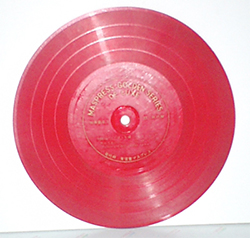
Y: It has its own beauty, so it's a matter of choice. It's just a matter of what goes together with what, and it's not like I'm actually making any changes to things.
A: I think there's a bit of a connection between Mr. Yagi's story and mine, and I can see that he's very particular about it.
Y: Why slides are better than a regular video projector is a difficult question for me as well, and I have a hard time putting it into words...
A: Your tape work (note: 《Sound Sphere》2011) is also very beautiful as a physical object.
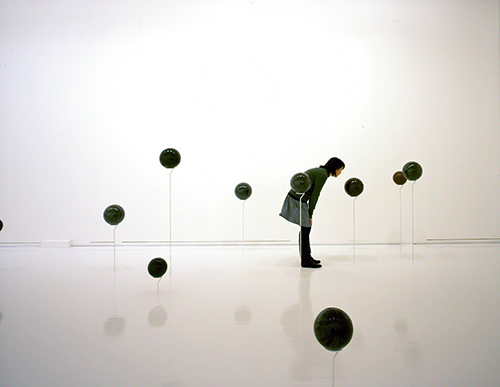
Y: But it's not like I created the shape; a sphere is a sphere, right? I don't think you would notice much of a difference if you compared the two with a bowling ball. When it comes to whether or not it can be perceived as beautiful, I feel like it doesn't have much meaning unless it's connected to the actual act. Earlier, when I said simply that the visuals were good, I meant that the finished product was based on a certain mechanism and had a certain shape, so I decided to ignore that functionality and compete on form alone. I feel like that's probably impossible.
A: I feel like I'm really connected to them...
Y: Maybe it's from a design editorial perspective? For example, it's a matter of how to display things, such as the spacing and how much white space to take in, and when you look at what you're putting out on its own...
For example, the work that uses the handle of an umbrella (note: Rainyday Music, 2005) is not particularly special, but it has a very beautiful shape to it.
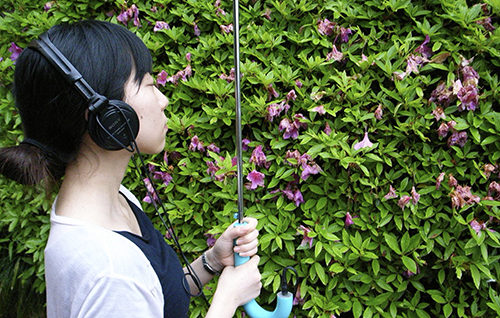
A: So I guess that's why it looks that way because it's tied to how you create your work.
Y: Well, I do pay a lot of attention to the final finishing touches. For example, how the player of the ball device looks, or how many millimeters of the wooden frame other than the aluminum that sticks out at the edges. Framing is very important when creating a work, isn't it? If anything, I'm more concerned about the frame than the contents, and I'm more concerned with how thick and deep the frame is than with creating the work itself. It's fun, and I think I like the directing and editing of the work more than the work itself. I think this is probably based on what I have studied.
■Finally, please give a message to the customers who come to see the off-the-record exhibition.
Y: That's really difficult... Of course, I want as many people as possible to see it...but that may be for political or economic reasons... If you ask me, do artists create their work because they want people to see it? I don't think that's the case.
A: Lol!
Y : From the organizer's perspective, isn't mobilizing people for an exhibition extremely important? But don't writers have a very small desire to have people come and see their work? I feel really embarrassed when people I know see what I've created...
A: But that feeling is amazing.
Y: That's why when people say things like, "I'm sorry I couldn't go to see the exhibition," I just say, "Okay, okay." So I can't say, ``Why didn't you come see me?'' Even so, he gets angry when he's turned away from a drinking party...
A: But for me it's about 50/50. Well, I feel embarrassed, but I guess what comes first is that I want to see it...
Y: That's right. So, after all, I want the people I'm working with to be happy.
A: Yes.
Y: That's why I think that society in my mind still hasn't expanded beyond that.
A: But like Mr. Yagi said earlier, when I say "please come to the exhibition," I mean... (lol)
Y: But since we're doing it, we want to show something interesting, and of course we want people to come and see it and be happy. My request to the customers who come to the exhibition is that I want them to come to the exhibition and think about something in light of their own lives. I don't think art is useless. I think it can be useful in daily life as well. However, I feel that like art, you can't use it effectively unless you think about it properly. That's why I think it's important to think more deeply about what the exhibit was about than the people who created it, rather than just thinking that it was fun to see and then going home. That's why art is learning.
A: In addition to the exhibitions, it seems like there will be a lot of readings, music, and other performances, so I'm looking forward to those as well. Also, it looks like they'll be able to make some good catalogs... I would be happy if you could enjoy that as a set.
Y: The catalog is meant to remain, but once the exhibition period ends, you can't see it anymore, so in that sense, I hope people don't miss out on seeing the interesting exhibitions.
■ “Daily Life/Off the Record” Exhibition ■
Date and time: Saturday, January 11, 2014 to Thursday, January 30, 2014 10:00-18:00
Venue: KAAT Kanagawa Arts Theater Middle Studio
